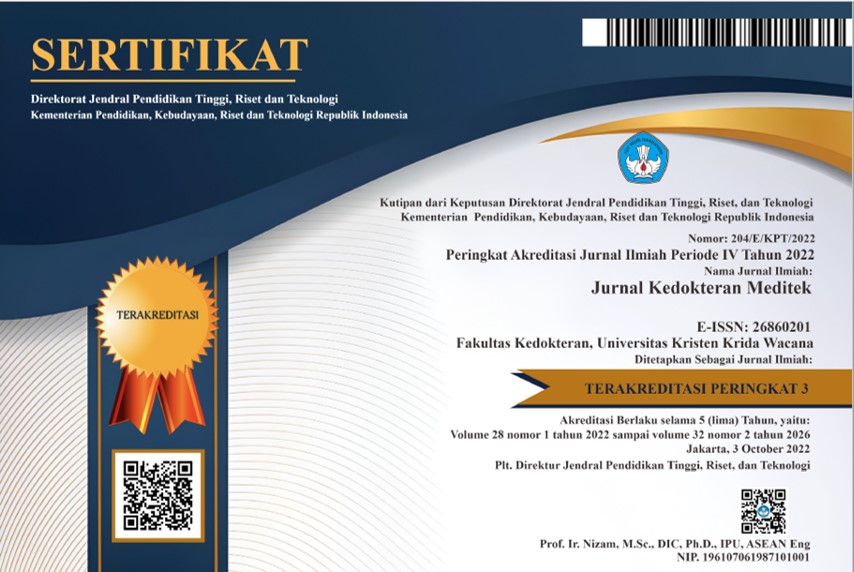Hubungan antara ASI Eksklusif dengan Kejadian Amenore pada Ibu yang memiliki Bayi di Puskesmas Kelurahan Palmerah II, Jakarta Barat, September 2017
DOI:
https://doi.org/10.36452/jkdoktmeditek.v24i65.1650Abstract
Breast Milk provides all the nutrients babies need. The American Academy of Pediatrics recommends exclusive breastfeeding during the first 6 months. Previous studies suggested that exclusive breastfeeding may inhibit the occurrence of ovulation/lactational amenorrhea, thus explains its use as a natural contraceptive within the first 6 months. However, factors associated with lactation amenorrhea are not fully evaluated. The present study aimed to examine the relationship between exclusive breastfeeding and lactational amenorrhea. A cross sectional study was performed at Posyandu in palmerah, West Jakarta in September 2017. Samples of 110 mothers were selected by consecutive method. Data obtained by questionnaires were examined using univariate and bivariate analysis. Out of the studied subjects, 60,9% mothers exclusively breastfed their babies, whereas 73,64% had lactational amenorrhea. The study found that there was a significant relationship between lactational amenorrhea and exclusive breastfeeding (p= 0,000; OR= 53,85; 95% CI= 14,078-205,982. Significant relationships were also found between lactational amenorrhea and maternal age (p=0,014; OR= 5,62; 95% CI= 1,41-22,43), and with maternal education (p=0,149; OR=2,76; 95% CI= 0,696-10,95). However, there is no significant relationship between lactational amenorrhea and maternal working status and parity. The study concludes that exclusive breastfeeding (>6 months) may be used as a natural method of effective family planning to space to the next pregnancy. This study recommends extending breastfeeding until 12 months. Therefore, breast feeding should be encouraged continuously.
Keywords: exclusive breastfeeding, lactational, amenorrhea

















